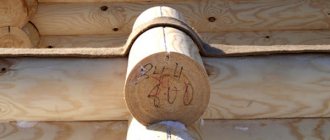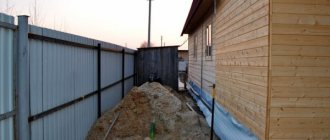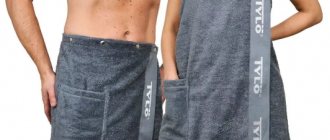Cost of SML/GSP panels in HPL plastic and PVC film (shipment from 40 m2)
| Plate | Type of decor | Sheet Format | Sheet weight | Price, rub./sheet |
| SML 8 mm | Double sided HPL | 1220*2440*9.5 mm | 33 kg | 5 890 |
| SML 8 mm | Single sided HPL | 1220*2440*8.8 mm | 32 kg | 4 910 |
| SML 10 mm | PVC film | 1220*2440*10 mm | 30 kg | 5 430 |
| SML 8 mm | PVC film | 1220*2440*8 mm | 24 kg | 5 100 |
| SML 8 mm | Single sided HPL (Egger) !Exclusive! | 1220*2440*8.8 mm | 32 kg | 6 549 |
| SML 8 mm | Double sided HPL (Egger) !Exclusive! | 1220*2440*9.5 mm | 33 kg | 8 571 |
| GSP 10 mm | PVC film | 1250*2500*10 mm | 42 kg | 3 010 |
| GSP 10 mm | PVC film | 1250*3000*10 mm | 49 kg | 3 590 |
Click Order
* There is no warranty for products with single-sided plastic
A new word in the market of non-combustible materials for wall decoration was the appearance of a fundamentally new composite material - glass-magnesium or glass-magnesite sheets, which are currently widely used for finishing office and commercial premises.
Magnesium steel sheets application:
The main advantage is the low flammability of this material, which makes it easy to check premises for compliance with fire safety requirements.
Low flammability is especially important for crowded places:
- shopping and business centers,
- medical institutions,
- children's institutions,
- cultural institutions,
- and other places with increased requirements for the level of non-flammability of finishing materials.
Basis of LSU panels:
The new finishing material consists of several layers applied to a reinforcing mesh made of woven fiberglass. The main components that are applied to the reinforcing mesh of the SML sheet are magnesium oxide and chloride, mixed with fine wood chips and perlite, making the new material practically non-flammable and meeting the highest environmental safety standards, due to the absence of phenols and other aromatic hydrocarbons in their composition .
In addition to increased fire resistance, the panels do not emit fine dust during operation, which irritates the respiratory system and causes allergic reactions.
One of the characteristic features of SML Premium fire-resistant panels with acrylic coating is their ability to take a curved shape, which gives scope for the implementation of various design concepts for room decoration. Flexibility is achieved through an internal fiberglass reinforcement layer.
Magnesium glass sheets technical characteristics:
| Name | Flammability | Density, kg/cub.m. | Coeff. soundproof, Rw, db | Water absorption by weight | Dry bending strength, mRa | Flexural strength in wet condition, mPa | Coeff. thermal conductivity, W/mK |
| SML Premium | NG | 1050 | 42 | 11-15% | 13,2 | 10,6 | 0,21 |
In addition to increased fire resistance, HPL coating does not require additional painting or processing - the panels themselves are a finishing material. They are easy to clean, wear-resistant, and not susceptible to aggressive chemical environments and UV radiation. The panels do not fade and there are no stains left on them.
Magnesium glass sheet dimensions:
For interior wall decoration, decorative panels with a thickness of 6,8,10 or 12mm are usually used.
When finishing with LSU sheet panels, “wet” work is completely eliminated, installation is extremely simplified, and takes less time than other types of finishing materials. When installed by professionals, installation time can be reduced by 4-5 times.
Results
The flammability class is an important indicator that should be taken into account, especially if construction or repair is carried out independently without the involvement of reliable companies that specialize in such work and have the necessary skills and knowledge regarding the flammability of materials and their compatibility. However, nothing is impossible! The main thing is not to be afraid to ask questions to qualified sellers of building materials and choose products from reliable and trusted manufacturers who strictly follow GOSTs and Standards and do not make mistakes, and especially not deception, when labeling manufactured construction products.
HPL panels. SML Premium wall panels with double-sided HPL plastic coating:
HPL panels are already familiar LSU panels with HPL plastic applied to them on both sides. This makes them a material unsurpassed in its functionality and range of applications. The technology of polymerization of panel filler components in an electron flow (EBC) gives these panels truly unique properties.
Applying plastic on both sides is necessary to reduce the stresses on the plate that arise during the process of applying plastic to the LSU sheet. This technology allows you to avoid deformation of panel sizes when temperature and humidity conditions change during operation.
Thanks to HPL plastic, the panels acquire, in addition to the characteristics characteristic of SML Premium, also increased moisture and wear resistance, making them an excellent material for finishing premises in a “vandal-proof” design.
HPL plastic application:
Plastic decorative HPL panels are most often used for wall decoration in:
- medical institutions,
- children's institutions,
- gyms,
- fitness centers,
- entrances of houses and staircases,
- elevator halls and cabins,
- chemical production facilities,
- and other premises with increased requirements for fire safety and hygiene.
HPL plastic characteristics:
The high-pressure plastic used in the manufacture of panels gives the panels the following properties:
• fire resistance (KM 1 fire safety class); • resistance to aggressive environments (possibility of finishing premises for the production of chemicals); • increased wear resistance (resistance to scratches and abrasion for use as a “vandal-proof” finishing material); • moisture protection (can be used in damp rooms or outdoors); • high environmental friendliness (exceeding in these indicators SML Premium panels with acrylic coating).
Flammability test method
All building materials, regardless of their multilayer nature and scope of application, are tested for flammability using a single complex and labor-intensive method, each stage of which is subject to mandatory precise recording and is carried out exclusively by organizations that have permission to conduct such studies.
Important! On the territory of the Russian Federation, only a few organizations are authorized to conduct fire tests, including: the Ministry of Emergency Situations of Russia, the Experimental Research Institute, the Pozhaudit ANO, the Kucherenko Research Institute and a number of others.
Flammability testing steps:
- Preparatory - here 12 completely identical samples of the material being tested are prepared, the thickness of which must correspond to the real values at which the material will be used. When testing multilayer materials, samples are taken from each layer.
- Exposure - prepared samples are kept in room-greenhouse conditions (appropriate temperature and humidity in the absence of drafts) for at least 72 hours, while the samples are regularly weighed. When a constant weight is reached during 2-3 consecutive weighings, further weighings are stopped.
- Checking - each of the 12 samples is placed in turn into a pre-calibrated, tested and heated combustion chamber, equipped with air supply and exhaust gas removal systems, and kept there for a certain time.
- Measurements - after completing the verification stage, the sample is removed from the chamber, measurements are taken, mass loss, temperature (and the rate of its fall), the amount of gases released and the burning time without a fire source are recorded.
- Conclusion - at the final stage, measurements taken on all 12 samples are analyzed, while - as a rule - extreme indicators (best and worst) are excluded, after which the material or product is assigned a certain flammability class.
Disadvantages of heat-resistant fabrics
Unfortunately, some heat-resistant fabrics are very expensive. Aramid and quartz fabrics are expensive due to their rarity and complexity of production. But, they are distinguished by their excellent qualities. Some thermal fabrics can be too heavy , which will be a big disadvantage, for example, when working as a firefighter. Therefore, when choosing a heat-resistant fabric, you need to know its composition and choose accordingly to the area of use.
It is worth paying attention to the composition of the fabric. For example, the fabric can be 100% cotton, but treated with special fire-resistant agents. Or it contains special heat-resistant fibers that provide heat resistance. But, fabrics with special impregnations, at high temperatures, can char and release gas. It is these additives that inhibit combustion for some time.
Fireproof building and finishing materials
In direct contact with fire, it does not melt for about a minute.
Silica fabric
Silica fabric is an excellent thermal insulation material. It is a prototype of asbestos, suitable for higher temperatures. And it is a fire resistant fabric. Withstands up to 1000 C0 . It has high chemical resistance and is not susceptible to mold.
Silica fabrics are used in mechanical engineering, the petrochemical industry, and for the manufacture of firefighter clothing.
Thermal insulation materials
And he is worthy of attention. Really great choice. Weaving technologies make it possible to create any texture from non-flammable fiber - from the finest translucent veil of various shades to pleasant to the touch velvet or dense blackout, curtain and upholstery fabric, imitating the sensations of natural fabrics such as linen, cotton, silk, wool. Non-flammable fabrics have another advantage; they are low-wrinkle fabrics and also have low shrinkage. Using fireproof fabrics in the interior of, say, a nightclub or business center, you can ease relationships with fire authorities and insurance companies, since fire-resistant fabrics have the necessary certificates.
What benefits does installing partitions provide?
When properly positioned, fire partitions significantly reduce the rate of spread of open flames. Specialized designs make it possible to quickly localize a fire, which helps eliminate it in the shortest possible time.
Fire partitions installed in the room significantly reduce the damage that could be caused by fire in their absence. In addition, delimiting rooms with such structures reduces the overall level of smoke in the building. The latter factor allows for the safe evacuation of personnel without exposing people to the risk of carbon monoxide poisoning.
Varieties of fire-resistant, heat-resistant fabrics
Carbon fibers
Carbon fiber is a fabric made from thin threads formed by carbon atoms. It is created in a special way, which results in high tensile strength, high tension force, low specific gravity and low coefficient of thermal expansion, chemical inertness.
Carbon fibers are available in a variety of forms: stapled filaments, continuous filaments, woven and non-woven materials . But the most common types are strands, yarn, roving, and non-woven canvases. They are used to create various types of heat-resistant fabrics. There are also carbon sheets that can themselves be used to create special materials.
Carbon fibers can withstand temperatures of 300-370C0 , and high chemical resistance . It is also possible to obtain this material with high electrical properties.
Carbon fibers are used in construction, medicine, the creation of special clothing, footwear, and in a variety of chemical processes .
Quartz fibers
Quartz fibers are obtained by drawing from rods , because quartz does not melt even at very high temperatures. In industry, impurities of other oxides are added to quartz fibers , which makes these fibers easier to use and form a variety of products.
Quartz fibers are widely used in the chemical and electrical power industries due to their high chemical and thermal resistance. The melting point of pure quartz fibers is 1750 C0. They can withstand short-term temperatures of 2000 C0. This fabric can withstand temperatures of 1400 C0 and is considered fireproof. .
Asbestos fabric
Asbestos fabric is unique in its properties. It has high heat resistance up to 500C0 . Most often used in construction. For greater strength of cement, in the production of heat-resistant and durable pipes, sheets, pebbles . Also used to create asphalt, plastics, scraps, insulators .
Asbestos is famous for its excellent electrical insulation, heat insulation and fire resistance properties . Therefore, it is used to create hermetically sealed connections or for thermal insulation protection.
Asbestos fabrics are used as thermal insulation and lining material when sewing clothing for special purposes. For example, for firefighters or metallurgists. After all, asbestos can withstand very high temperatures; it can be used to insulate a stove or other heating devices.
Unfortunately, asbestos fabrics can be dangerous for humans , because the dust that is released from this material can remain in the lungs and cause chronic bronchitis, asbestosis or even lung cancer. But this only happens when asbestos fibers are used openly.
Aramid fabric
Aramid fiber is a chemical fiber that has high strength, heat resistance, elasticity, and resistance to various chemical reagents .
Now there are three types of aramid fibers:
- para-aramids,
- meta-aramids,
- aramid copolymers.
Para-aramids have increased heat resistance. Holding temperature for aramid fibers:
- Para-aramids - Tavron, Kevlar, SVM, Terlon from 250 to 370C0.
- Meta-aramids - Nomex, Arcelon from 370 to 400C0 .
- Aramid-kermel copolymers up to 350C0.
There are also a variety of types of aramid fabrics. It is worth paying attention to heat-resistant ones: Tvaron, Kevlar, SVM, Terlon.
Aramid fabrics do not burn or melt, are very durable and weigh little. At high temperatures they retain their properties. Military special clothing and thermal clothing are made from aramid fabrics. After all, aramid also has thermal insulation properties.
Tarpaulin
Tarpaulin is a thick canvas impregnated with special fire-resistant, water-repellent, anti-rot compounds . If fire-resistant impregnation has been carried out, the material becomes yellow.
Tarpaulin is used to make workwear, footwear, building materials, clothing and footwear for the army. Also, suits for welders and firefighters are made from tarpaulin.
The tarpaulin can withstand temperatures from -30 to +90 degrees .
Second category of fire resistance
Partitions of type 2 fire resistance belong to classes EI15 – EI30, and can resist fire for no more than 30 minutes. Their task is not so much to save material assets from fire, but to ensure the evacuation of people in danger. These partitions are made of lightweight box-shaped aluminum profile filled with a polymer heat-insulating composition. It reduces heat transfer and prevents the metal from quickly burning out or melting if the temperature at the source of the fire exceeds +650°C. Between sheets of fire-resistant plasterboard, mats of mineral wool insulation are placed. The rules for joining the partition with the walls and ceiling are the same - the frame and gypsum board sheets must be adjacent without the slightest gap. It is prohibited to install electrical wiring, air ducts and other utilities inside the partitions, which could become an opening for the spread of flame and smoke.
In this type of partition, glazing is possible even from floor to ceiling; you just need to install heat-resistant tempered glass. However, fire-resistant glass partitions are extremely expensive and are installed only in shopping malls and expensive stores, where they simultaneously play the role of a luxurious showcase. In office premises, glazing begins at 80–120 cm from the floor, or is present only on the doors.



